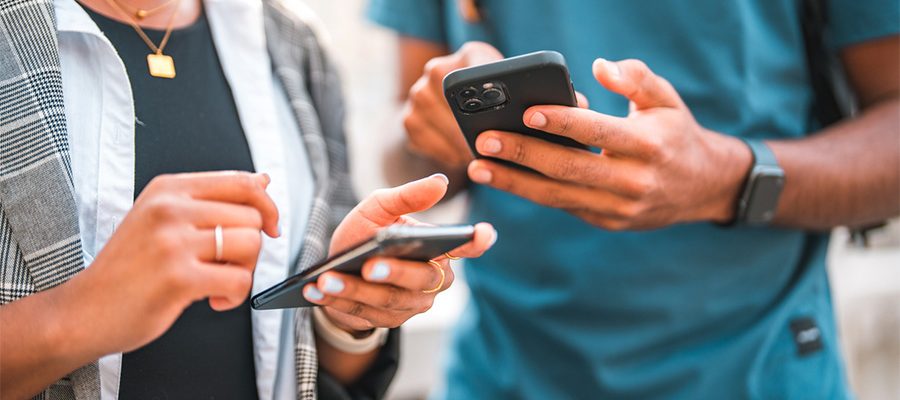
Peer-to-peer (P2P) payment apps offer simple and convenient ways to send and receive money. You’ve probably heard of these apps with names such as Zelle, PayPal, Venmo, and Cash App. Many P2P apps allow you to send money with just a single click or swipe. That speed gives fraudsters the chance to take advantage of users who aren’t paying attention.
P2P fraud happens when someone accesses or uses your account without your permission. P2P scams can happen if you were tricked, but you were still the one who approved a payment. Basically, P2P fraud involves unauthorized transactions, while P2P scams involve authorized transactions. The difference is important because the same protections aren’t available if a transaction is authorized. This means there may not be much that can be done to get your money back, even if it was a scam or a simple mistake.
What are some common P2P fraud scenarios and scams to be aware of?
- Unauthorized electronic fund transfers: If money leaves your account and you weren’t the person to send it, it might be what’s known as an unauthorized electronic fund transfer. This could be the result of a hacked account, a compromised card number, or a stolen device. It could also be that someone accessed your account through a phishing scheme.
- Seller scams: These scams can take many forms. They may start with offers for tickets, marked-down merchandise, or even cute puppies – it could be anything. However, they all have one thing in common – the item for sale is unlikely to ever be delivered to your door.
- Buyer scams: You might be asking, “How can you get scammed if someone sends you money?” It might seem odd, but it happens. This is known as an overpayment scam. They often start with something you’re trying to sell online and a bogus check to buy it. The scammer will overpay and then ask for a refund of the difference. When the check bounces, you’re on the hook for the amount of the bad check—and the item you were trying to sell might be gone, too.
- Money mule scams: These types of scams come with an added twist and could also result in legal trouble because it’s a scam used to launder money. The scam can involve fake dating accounts, work-from-home schemes, or phony prizes. Scammers send money, then ask victims to send it to another person. What they won’t tell you is the money is stolen—or the reason you’re sending it is made up to provide cover for illegal activity.
How can you avoid being a victim of P2P fraud and scams?
While scams and fraud may not be 100% avoidable, there are steps you can take to protect yourself. It’s important to be careful, because once you send a payment, you may not be able to cancel it.
Here are a few tips that might help—no matter what P2P app you’re using:
- Pay it safe: Many P2P apps don’t let you cancel a transaction once you’ve sent it to another user. With that in mind, avoid sending or requesting money from anyone you don’t know and trust.
- Take your time: Try not to rush when you’re using a P2P app to send money. If someone is pushing you to act quickly, it could be a red flag.
- Treat payments like cash: Money moves quickly when you use P2P apps. Once you hit send, money doesn’t take long to reach its destination. It’s a good idea to double-check you have the correct info to make sure your money goes where you intended.
- Use your security settings: P2P apps have measures in place to help keep your account secure. Multifactor authentication, which is sometimes called two-factor authentication, requires you to provide multiple pieces of information to access your account. The first is typically your username and password. The second step might require you to enter a numeric code you’re given in an email or text, or you might use fingerprint or facial recognition.
- Be aware of phishing: One way fraudsters might try to access your account is by posing as your bank or a P2P company. They may try to contact you through emails, calls, or texts. Avoid clicking links and sharing personal information. They may also claim you need to download another app or give them remote access to transfer money. Never give remote access to a third party.
- Keep your personal information private: If you use social media, avoid sharing things like your address, phone number, and other personal details. Also, ignore friend requests from people you don’t know.
- Protect your passwords: Use different passwords for P2P apps and other sites.
- Be safe on public Wi-Fi: Public Wi-Fi at places like your local coffee shop or library might not be secure. Refer to this advice from the Federal Trade Commission (FTC) about how to safely use public Wi-Fi to help protect your information.
What should you do if you have experienced fraud or been scammed?
Frauds and scams can happen to anyone. If you suspect you’ve been a victim, there are a few places you can turn.
- Contact your P2P company if you made the transaction using the company’s app.
- Contact your bank.
- Follow the FTC’s steps for reporting identity theft.
- File local police reports.
- Report the scam or fraud to the government.
- You could start with the Federal Trade Commission (FTC).
- You may also want to report scammers directly to the Federal Bureau of Investigations (FBI) Internet Crime Complaint Center.
If you authorized a payment mistakenly, there may be limits on what can be done to get your money back. However, reporting the information can help prevent it from happening again. Also, by knowing some tricks scammers use, you may be able to avoid problems in the future.





